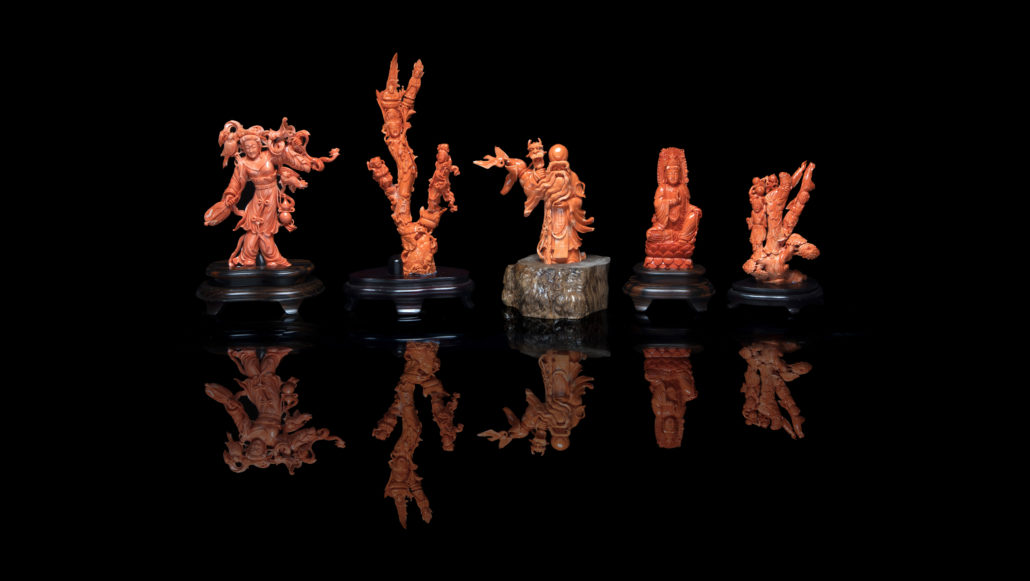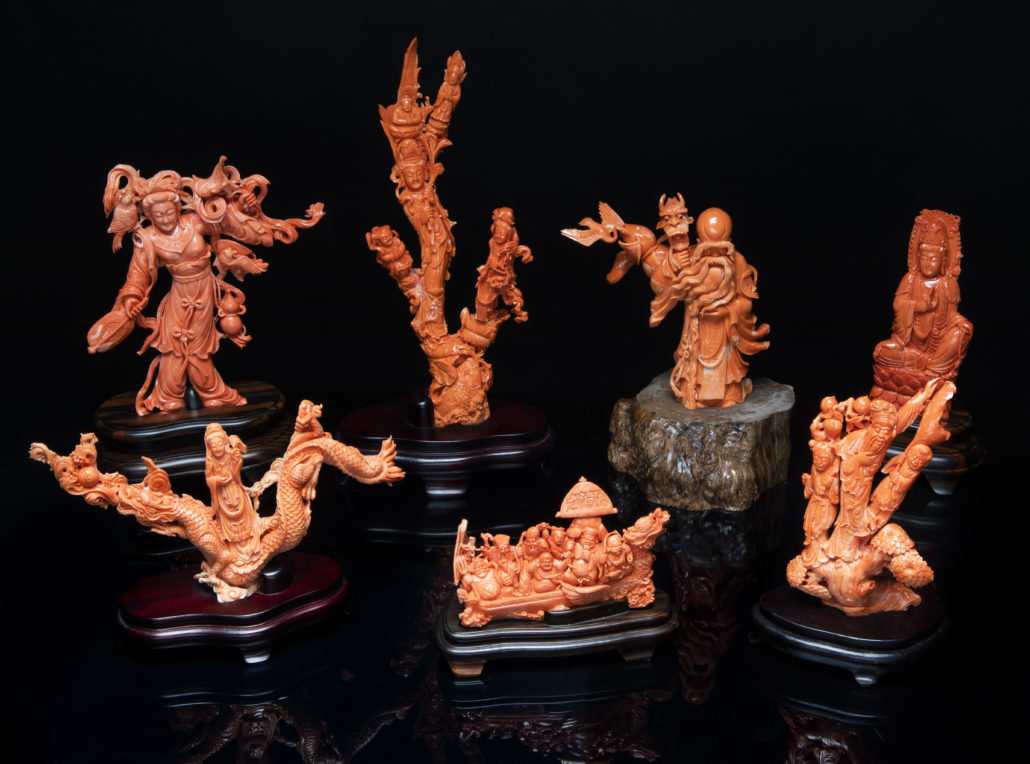Coral: magic and symbolism.
Oriental art has always held a great fascination for western man. to the. From the first commercial contacts along the Silk Road, Europeans have been fascinated by the strange translucent material that the Chinese were able to fashion so masterfully: porcelain.
This richly finished and decorated product It enjoyed great success in the European courts and was used as a status symbol among the royal houses and the nobility. . However, along with porcelain, we can count on another great protagonist of oriental art, transformed to adopt the most complex and imaginative forms: coral.
A symbol of elegance and good taste, it is obtained from a calcareous substance produced by tiny marine natives, whose colonies are gradually disappearing, which makes them increasingly rare and precious. . Corals present numerous chromatic variations, which characterize each species depending on the depth and the place where they are fished.
However, this material has not been chosen solely for its softness, luster and unique color. In fact, the roots of the link between the East and the coral run much deeper and are inextricably intertwined with the culture and spirituality of the people who mined and worked for it.
In addition to its beauty as a decorative element, Coral was considered an amulet to ward off negativity and its intense color was believed to give off vital energy. Adventurers and soldiers never embarked on an adventure without making sure to carry a piece of coral with them as an amulet.
The millenary tradition of Chinese crafts, which continues to flourish today, gave life to these small and wonderful treasures that transport us to a magical plane, where we find sculptural female beauties, fishermen pulling nets full of vitality and gods of the Fortune. In all the pieces you can see the intention of the artists to connect the coral with its original shape, creating long branched figures that perfectly embody the union of man and nature.
Precisely because of the rarity and risk of extinction of the coral, we find specimens that may be the latest creations of this trade, and we are the repositories of a skill that has hardly been achieved in other geographical places or in other plastic executions.




